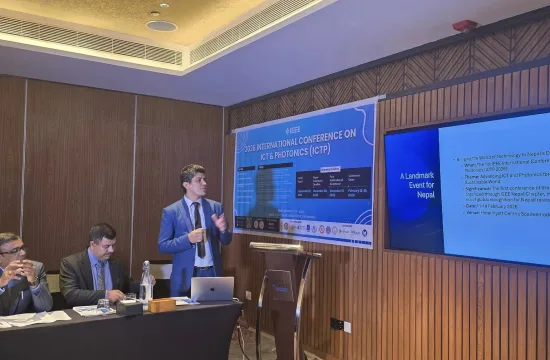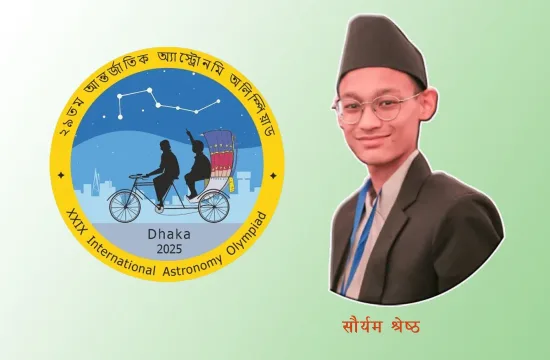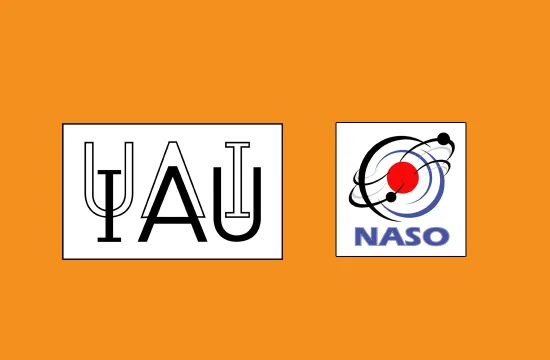The European Space Agency will partner with the Vienna Tourist Board to celebrate the 200th anniversary of the birth of Johann Strauss II with a fantastic live performance beamed to the stars on 31 May, 2025.
The date is just one day after the 50th anniversary of the signing of the ESA Convention, the birthday of the space agency that has since landed on a comet and peered back to the earliest days of the universe.
The Blue Danube Waltz—or An der schönen, blauen Donau—has long been celebrated as the ultimate ‘Anthem of’ Space’—the famous soundtrack of space docking in Stanley Kubrick’s 2001: A Space Odyssey. Now, ESA will broadcast a live production of Strauss’s Blue Danube deep into space, creating a timeless musical bridge between humanity and the universe.
The 13,743 individual notes of the piece will each correspond to an ‘ambassador’ who claims their favourite note online. The Waltz Into Space website also details the key and the instrument of the note you pick.
The agency’s 35 m-diameter deep-space dish antenna at Cebreros, Spain, will demonstrate its technical prowess on 31 May by transmitting The Blue Danube to its destined home among the stars, as performed in front of a live audience at Vienna’s MAK – Museum of Applied Arts—by the renowned Wiener Symphoniker (Vienna Symphony Orchestra) conducted by Petr Popelka.
“Music connects us all through time and space in a very particular way. The European Space Agency is pleased to share the stage with Johann Strauss II and open the imaginations of future space scientists and explorers who may one day journey to the anthem of space,” said ESA Director General Josef Aschbacher.
The Cebreros station, which itself is celebrating its 20th anniversary this year, is routinely used to communicate with ESA missions such as Juice, BepiColombo, and Hera, and with missions of partner agencies under resource-sharing agreements.
Throughout two decades of stellar technological achievement, it has supported well-known missions such as Rosetta, Mars Express, and NASA’s Perseverance rover. In a typical month it delivers over 500 hours of flawless spacecraft connection time.
The essential task of all ESA tracking stations is to communicate with spacecraft—to transmit commands and receive scientific data and spacecraft status information. ESA technically advanced stations can track spacecraft almost anywhere—circling Earth, watching the Sun, orbiting at the scientifically crucial Sun-Earth Lagrange points, or voyaging deep into our solar system.
The Cebreros facility is part of ESA’s global Estrack network, comprising six stations in six countries, including two other deep-space stations in Argentina and Australia. The network is expanding with the construction of a new deep space antenna in Western Australia.
“We are delighted that Cebreros station can support this artistic project using spare capacity to transmit a signal to the universe,” said Octave Procope-Mamert, responsible for ground infrastructure for spacecraft operations at ESA. “Sending a work of musical genius to the stars highlights the technical genius that we apply every day in flying and communicating with European missions discovering new knowledge throughout the solar system.”
“Strauss reaches beyond the solar system,” said Norbert Kettner, Director of the Vienna Tourist Board. “Stanley Kubrick’s ‘2001: A Space Odyssey’ made the Danube Waltz the anthem of space—the absence of the most famous of all waltzes from the 1977 Voyager Golden Record is a cosmic mistake that we are correcting with ‘Waltz into Space.’ At a distance of more than 25 billion kilometers from Earth, Voyager 1 is the most distant man-made object in space.”
As part of our mission with the European Space Agency, we are sending ‘By the Beautiful Blue Danube’ in the direction of the space probe that is already traveling through interstellar space, he added. “Waltz into Space’ will therefore have an impact beyond our solar system and also inspire people on Earth to experience culture in Vienna.”







